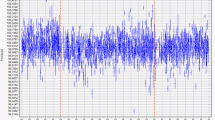Abstract
Building on work by Fermat and Huygens, Hamilton transformed the study of geometrical optics in his very first paper, presented when still in his teens. His ‘characteristic function’ was an analytical way to describe wavefronts, and in his hands a powerful tool to look at families of rays rather than isolated ones. His prediction of internal and external conical refraction in some crystals and its spectacular verification in a few months established his reputation among his contemporaries. This formulation of optics uncovered many general properties, not easy to see in the conventional method of tracing individual rays. The deepest outcome of his early optical work was a parallel view of the mechanics of particles, which played a fundamental role in the birth of quantum mechanics and continues to be the standard framework for classical mechanics up to the present time.
Similar content being viewed by others
References
The Feynman Lectures on physics, now available free on the caltech website, has an elementary discussion of Fermats principle and the principle of least action, www.feynmanlectures.caltech.edu, Volume 1, chapter 27 and Volume 2, chapter 19
For a modern treatment of conical refraction, see the paper by Berry, Jeffrey and Lunney, in Proceedings of the Royal Society A, volume 462, page 1629 (2006), the link is http://rspa.royalsocietypublishing.org/content/royprsa/462/2070/1629.full.pdf
For Hamiltonian mechanics see the article by N Mukunda in this issue and references therein.
For Dijkstras algorithm and the wavefront interpretation, see the book Algorithms by Dasgupta, Papadimitrion and Vazirani.
The ‘Raman spot’ is described in the paper by Raman, Rajagopalan, and Nedungadi, Proceedings of the Indian Academy of Sciences A volume 14, page 221, (1941) link at http://www-old.ias.ac.in/j_archive/proca/ 14/3/221-227/viewpage.html
Author information
Authors and Affiliations
Corresponding author
Additional information
Rajaram Nityananda works at the School of Liberal Studies, Azim Premji University, Bengaluru. Earlier, he spent a decade at the National Centre for Radio Astrophysics in Pune, and more than two decades at the Raman Research Institute in Bengaluru. He has taught physics and astronomy at the Indian Institute of Science in Bengaluru and the IISERs in Pune and Mohali. He is keenly interested in optics in a broad sense, and more generally, problems, puzzles, paradoxes, analogies, and their role in teaching and understanding physics.
Rights and permissions
About this article
Cite this article
Nityananada, R. Hamilton’s optics. Reson 21, 511–528 (2016). https://doi.org/10.1007/s12045-016-0357-x
Published:
Issue Date:
DOI: https://doi.org/10.1007/s12045-016-0357-x




